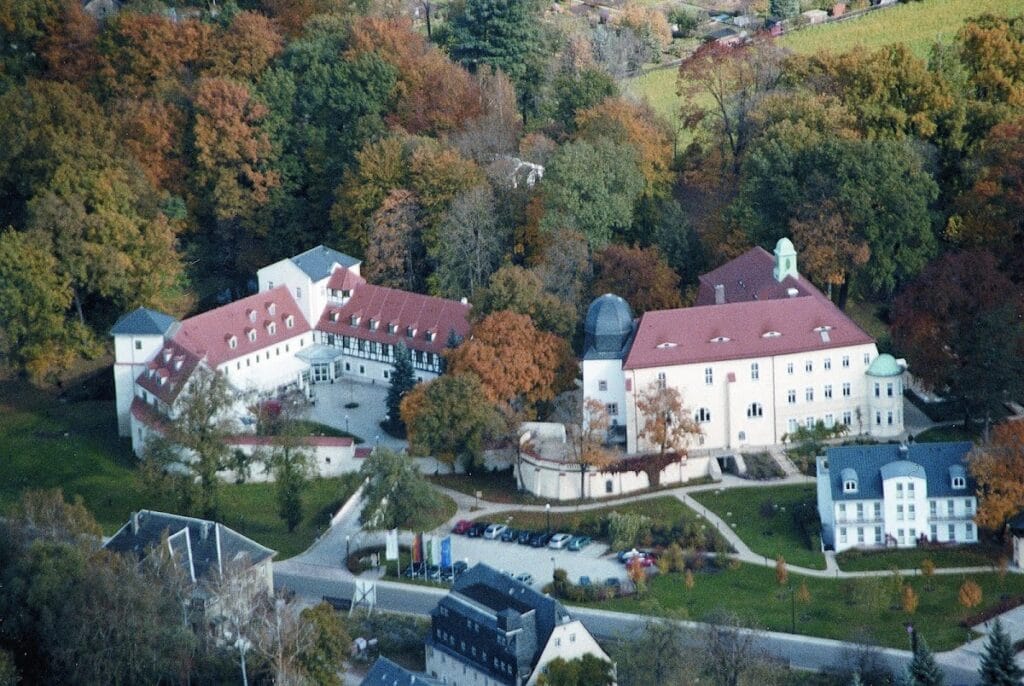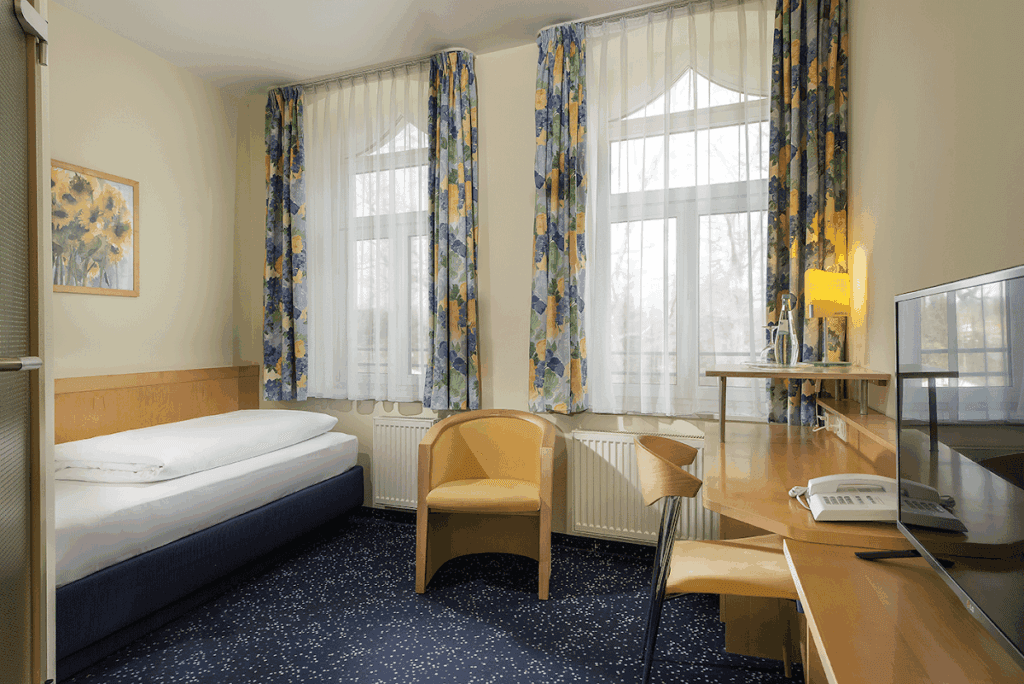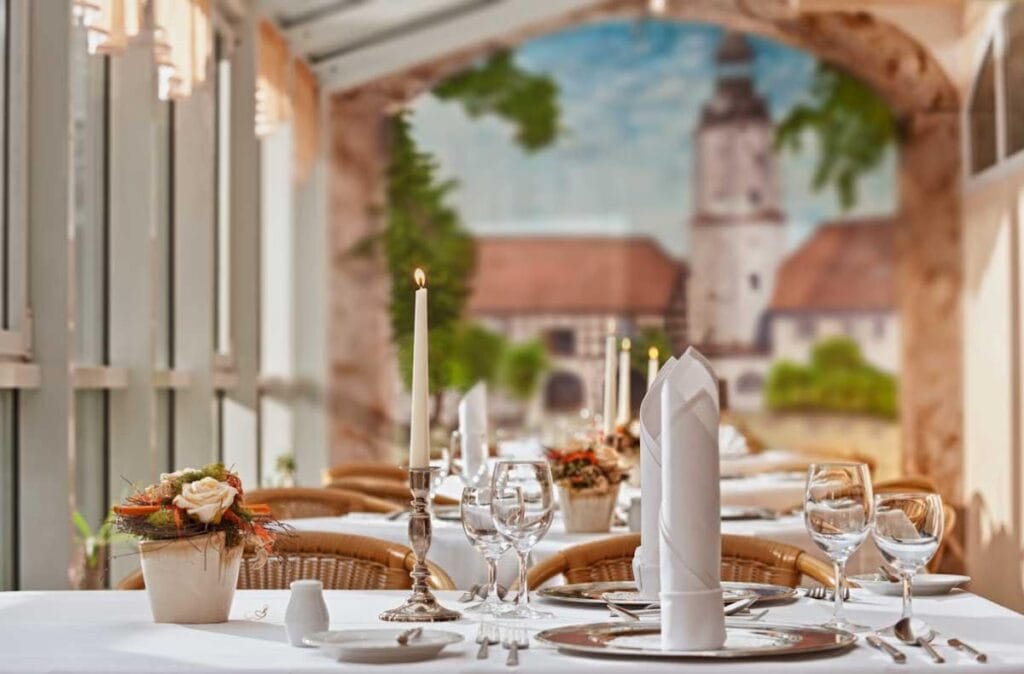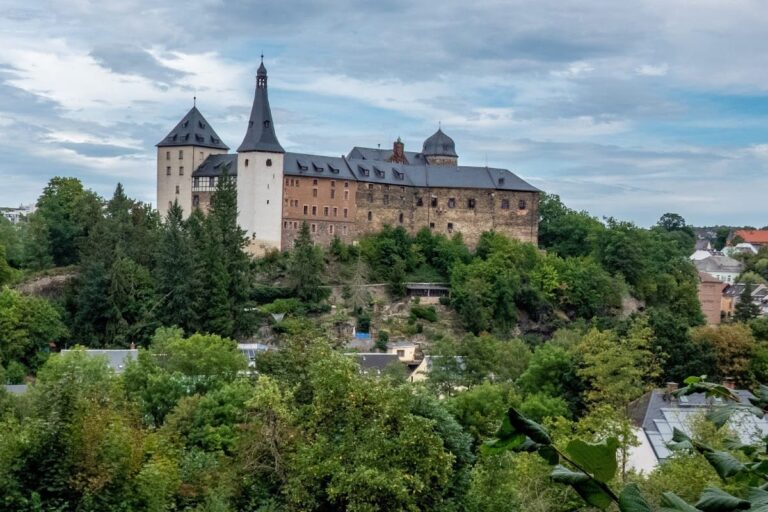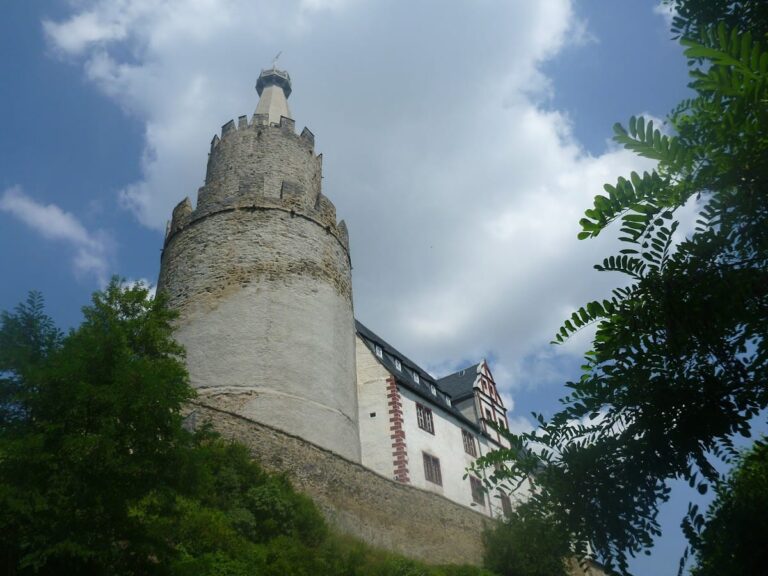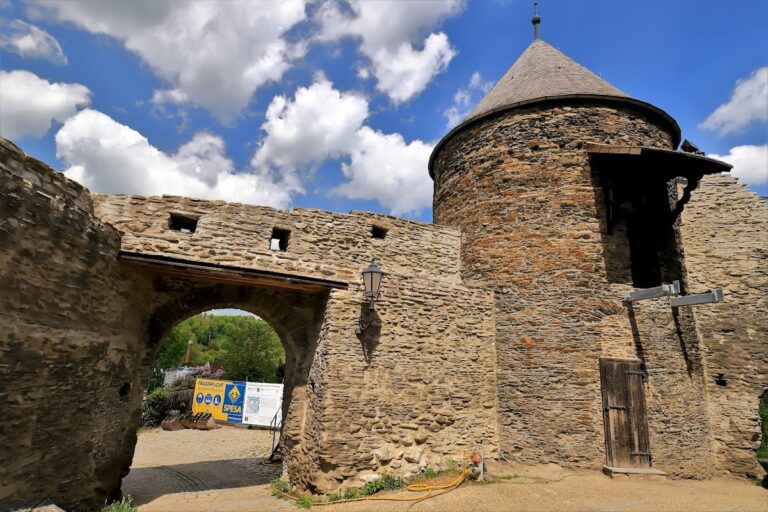Schweinsburg Castle: A Historic Water Castle in Neukirchen, Germany
Visitor Information
Google Rating: 4.1
Popularity: Medium
Google Maps: View on Google Maps
Official Website: www.schloss-schweinsburg.de
Country: Germany
Civilization: Medieval European
Remains: Military
History
Schweinsburg Castle is located in Neukirchen, Germany, and was established by German settlers during the second half of the 12th century on land that once housed a Slavic community. This site emerged amid the eastward expansion and colonization movements of medieval Germany.
The earliest records identify the castle in 1222 under the name “vest huz cremascowe.” It was originally controlled by the noble family Herren von Crimmitschau, documented since 1212 as imperial vassals. They held significant regional influence, serving as pleißnischer Landrichter, a type of regional judge, which attests to their administrative authority in the area.
After the Herren von Crimmitschau family died out in the 13th century, ownership transferred to the related Schönburger family. They established the Schönburg-Crimmitschau branch, using the castle as their seat. By 1307, this family had recognized the Wettin dynasty’s overlordship over the estate, reflecting shifting power structures in the region. Eventually, the Crimmitschau line of the Schönburger family also came to an end by the late 14th century, at which point the Wettin family took direct control, administering the estate from the castle.
The castle’s name changed to Schweinsburg from 1486 onwards. Ownership passed through several hands in the following centuries. In 1583, the Einsiedel family acquired it but sold it again by 1606. By the mid-18th century, the once-fortified and now deteriorated castle underwent transformation under the von Berbisdorf family, who converted it into a Baroque-style palace. Further architectural changes took place between 1908 and 1911 when industrialist Carl Wolf commissioned renovation work in the Neo-Baroque style.
Following the upheavals of 1945, the estate was seized and altered under new authority. The castle’s bell tower was demolished and its chapel bell lost. Between 1946 and 1989, the castle served as a political party school for the Communist Party of Germany (KPD) and later the Socialist Unity Party (SED). During this period, the historic chapel was repurposed into a gymnasium, which resulted in the loss of its altar. In 1994, careful renovations transformed Schweinsburg Castle into a conference center and hotel complex, reflecting its continued adaptation to modern uses.
Remains
Schweinsburg Castle is classified as a water castle, meaning it was constructed with surrounding water defenses, situated about 250 meters above sea level near the Pleiße River in Neukirchen. The medieval core of the castle, dating back to the 13th century, included a fortified building encircled by a protective moat, typical of water castle design meant to provide defense and controlled access.
Within the original complex stood a bell tower, identified as the tower of the lower castle. This tower was removed in 1945, changing the silhouette of the site. The castle also contained a chapel notable for holding a historic altar and a valuable bell inherited from the nearby Harthau chapel, marking its religious function within the estate. During the mid-20th century, the chapel was converted for use as a gymnasium, leading to the removal of these sacred fittings.
The castle’s architectural evolution is visible in its blend of medieval fortifications along with Baroque and Neo-Baroque elements. In the 18th century, the structure underwent Baroque remodeling, reflecting changes in style and the castle’s transition from military fortification to residence. Early in the 20th century, further renovations introduced Neo-Baroque features under industrialist Carl Wolf, highlighting continued investment in the site’s appearance and utility.
Today, the complex functions as a conference center with an integrated hotel. Although portions of the medieval water castle remain visible, much of the structure reflects alterations across centuries, bearing witness to its varied uses and custodians. The site’s layered history is thus preserved in its surviving features, offering insight into its medieval origins and subsequent adaptations.
